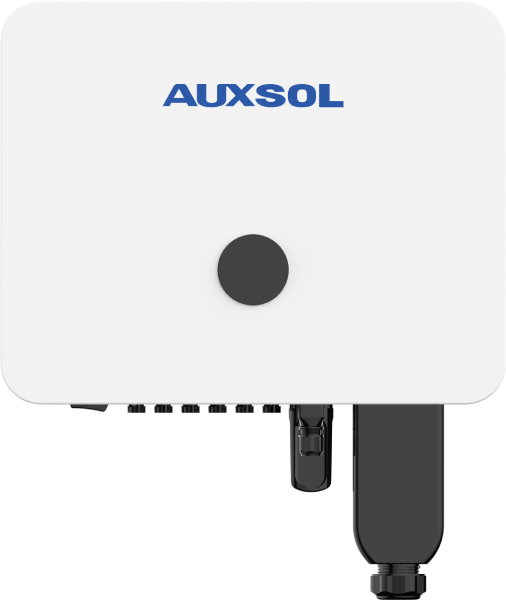What Problems Do On-Grid Inverters Solve?
On-grid inverters are core components of grid-connected solar systems, addressing critical pain points that hinder efficient solar energy utilization:
-
Energy Waste from Off-Grid Limitations: Traditional off-grid solar systems rely on batteries for energy storage. When battery capacity is full, excess solar power is wasted. On-grid inverters feed surplus electricity into the public grid, eliminating waste and maximizing energy value.
-
Incompatibility with Grid Power: Solar panels generate direct current (DC), while household and C&I appliances use alternating current (AC). On-grid inverters convert DC to stable AC that matches the grid’s voltage and frequency, enabling seamless integration with existing power infrastructure.
-
Low Energy Reliability: Off-grid systems fail when batteries drain. On-grid inverters let users switch between solar power and grid power automatically.
-
Limited Economic Returns: Without a grid connection, users can only consume self-generated solar power. On-grid inverters enable net metering (in regions with relevant policies), where users sell excess power to utilities, turning solar investments into ongoing revenue streams.
Current Technical Level of On-Grid Inverters
The global on-grid inverter industry has entered a mature stage, with key technical advancements focusing on efficiency, reliability, and smart integration:
-
High Conversion Efficiency: Leading models (including AUXSOL’s offerings) achieve peak efficiency of over 98%. This minimizes energy loss during DC-AC conversion, directly boosting the solar system’s overall energy output.
-
Wide Input Voltage Range: Modern on-grid inverters support a broad DC input voltage range. This compatibility allows flexible matching with different solar panel configurations and adapts to voltage fluctuations caused by sunlight changes.
-
Enhanced Grid Compliance: To meet global grid standards (e.g., IEC 61727, IEEE 1547), inverters now include features like low-voltage ride-through (LVRT), overvoltage protection, and frequency regulation. These ensure stable operation even when the grid experiences disturbances, preventing sudden system shutdowns.
-
Smart Monitoring & Control: Most on-grid inverters come with built-in communication modules (e.g., Wi-Fi, RS485, 4G). Users can remotely monitor real-time power output, inverter status, and fault alerts via dedicated platforms—laying the groundwork for intelligent solar system management.
-
Durability for Harsh Environments: Advanced designs include IP65/IP67 waterproof ratings and wide operating temperature ranges (-25°C to 60°C). This enables reliable performance in extreme weather conditions, from hot deserts to cold regions, extending the inverter’s lifespan.
AUXSOL On Grid Inverter: ASN-30TL-G2
AUXSOL’s ASN-30TL-G2 is a high-performance three-phase on-grid inverter. Its key specifications and advantages align with the latest technical trends, making it a competitive choice for grid-connected systems:
Core Specifications:
-
Rated Output Power: 30kW (three-phase)
-
Peak Conversion Efficiency: Up to 98.6%
-
DC Input Voltage Range: 150V-1000V
-
IP Rating: IP66 (dustproof and waterproof)
-
Operating Temperature Range: -30°C to 60°C
Key Advantages:
-
High Energy Yield: The ultra-high conversion efficiency and wide input voltage range ensure maximum utilization of solar energy, even in variable sunlight conditions.
-
Robust Durability: The IP66 rating and wide temperature tolerance make it suitable for outdoor installation in diverse climates, reducing maintenance needs.
Frequently Asked Questions About AUXSOL Inverters
Q1: Do AUXSOL inverters support a customer's existing monitoring platform?
A: Yes. AUXSOL inverters support third-party monitoring platforms. We can provide the datasheet for supported platforms on demand.
Q2: What is the oversizing ratio of AUXSOL inverters?
A: AUXSOL inverters support an oversizing ratio of 1.5. The maximum output power of the inverter is 1.1 times the rated output power. It is recommended to confirm the ratio based on the characteristics of the projects. Normally, the ratio can be 1.2.
Q3: What is the maximum output reactive power capacity of AUXSOL inverters?
A: The adjustable range of the inverter's power factor is ±0.8, that is, the maximum reactive power output is 60%Pn.
Get Your Custom AUXSOL On-Grid Inverter Quote
Are you planning a grid-connected solar project and looking for a reliable on-grid inverter solution? AUXSOL offers tailored support for C&I and utility-scale projects.
Contact AUXSOL today to get a fast, competitive quote and expert technical guidance.

